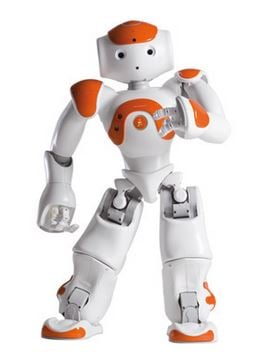No one is certain as to why, but it seems that NAO, the anthropomorphic robot from the French company Aldebaran, appeals to children with autism. Some experts suggest the appeal has something to do with NAO’s non-threatening voice and appearance. Others say they believe it is NAO’s ability to communicate with these children without the complicated social and emotional facial clues given off by other humans that confuse and frighten them.
Several studies indicate that NAO is a valuable addition to the existing systems that work with autistic children. No claim is made by NAO’s adherents that it is the only viable strategy for dealing with childhood autism-- but with over 5000 of these anthropomorphic robots placed in research and educational institutions worldwide there is a lot of anecdotal evidence to suggest they work well with these children in existing classrooms. The recent experiences of educators and children at Shaler Academy in Ridgefield, N.J.and at Vanderbilt University illustrates this point.

Shaler Academy is presenting a five-year-old child named Peter that shows a specially programmed NAO images answering several questions that have been put to the class. He gets the answers right and NAO pumps his fist and the kids go wild. Later Peter’s mother says, "Most of the time it’s pulling teeth to get him to talk about what happens at school but he was excited to talk about the robot… It’s definitely heartening. I want him to have enjoyable experiences at school and hopefully it will help him in some way as an added therapy".
In a controlled study at Vanderbilt University with children aged two to five, the autistic children in the study clearly indicated their preference for NAO when confronted with a choice of paying attention and focusing on the robot or human instructors.
Whatever the reason--or reasons--NAO has become an important tool in the fight against autism, a problem that bedevils an estimated one child in every eighty-eight. The offer also includes five days of instruction for teachers--but there is more than sufficient anecdotal evidence that NAO’s presence in the classroom can greatly enhance already proven methods for assisting parents and educators with autistic
